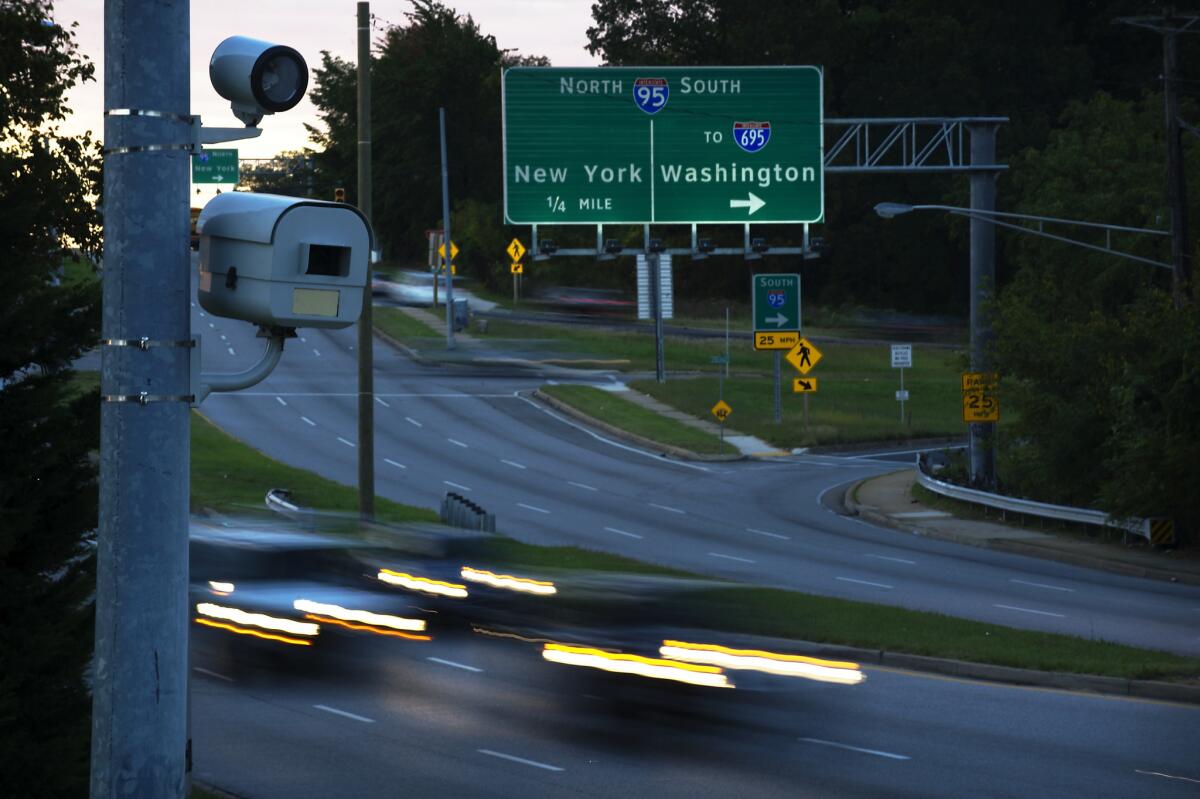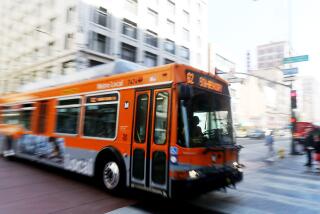Broken traffic cameras gave Washington drivers an unintended reprieve

- Share via
Reporting from Washington — Rarely has a government screwup been greeted with such glee. It turns out many of the District of Columbia’s ubiquitous speed cameras -- which have dinged so many motorists with $100 fines for driving 36 mph -- were broken for much of last year.
City officials had previously attributed a drop in traffic camera revenue of more than 50% to safer driving. But it turns out broken camera batteries were more to blame.
The revelation, reported this week by the Washington Post and local media, came at a City Council meeting.
But the hole left in the district’s budget may be the most revealing aspect of the camera failure. The city took in $34 million in camera fines during the last fiscal year. That was down from $75 million in 2013, according to the Post.
City officials have long insisted the traffic cameras were intended to save lives, not raise cash. But cities that use cameras to fine drivers have come to depend on the funds to plug potholes and make up other budget gaps.
Washington police credit the cameras with helping to reduce traffic deaths by 10% last year and emphasized that broken cameras were only part of the story.
“During periods of extreme cold and snow last winter, there were instances when we could not change the batteries because they were not accessible, or the temperature affected the charge. We have taken additional steps to enhance internal temperature controls since last winter, alleviating this problem,” Assistant Chief Lamar D. Greene said in a statement. “It should be noted that speed limits on some streets have been raised and more motorists are obeying the law and have begun to slow down.”
In some cities, like Los Angeles, furious motorists have won the battle to eradicate them. The L.A. City Council voted to shut its program down in 2011 after public outcry.
Not so in the nation’s capital. The fines have become a rite of passage for the district’s many tourists, right up there with catching a glimpse of the baby panda. It doesn’t take much to get your picture snapped by the electronic silver boxes, given that most city streets have a 25 mph speed limit. A few weeks later, you get a thin letter with an unflattering photograph and directions on paying the fine.
And the cameras have been popping up more and more, often at points in the road where drivers are tempted to accelerate, such as the small K Street tunnel leading in and out of downtown.
Taxi and Uber drivers seem to track the cameras pretty well, and most GPS and smart phone applications offer warnings.
But drivers can’t get too cocky -- the cameras appear to be working again.
Follow @noahbierman on Twitter for national news.
More to Read
Sign up for Essential California
The most important California stories and recommendations in your inbox every morning.
You may occasionally receive promotional content from the Los Angeles Times.











